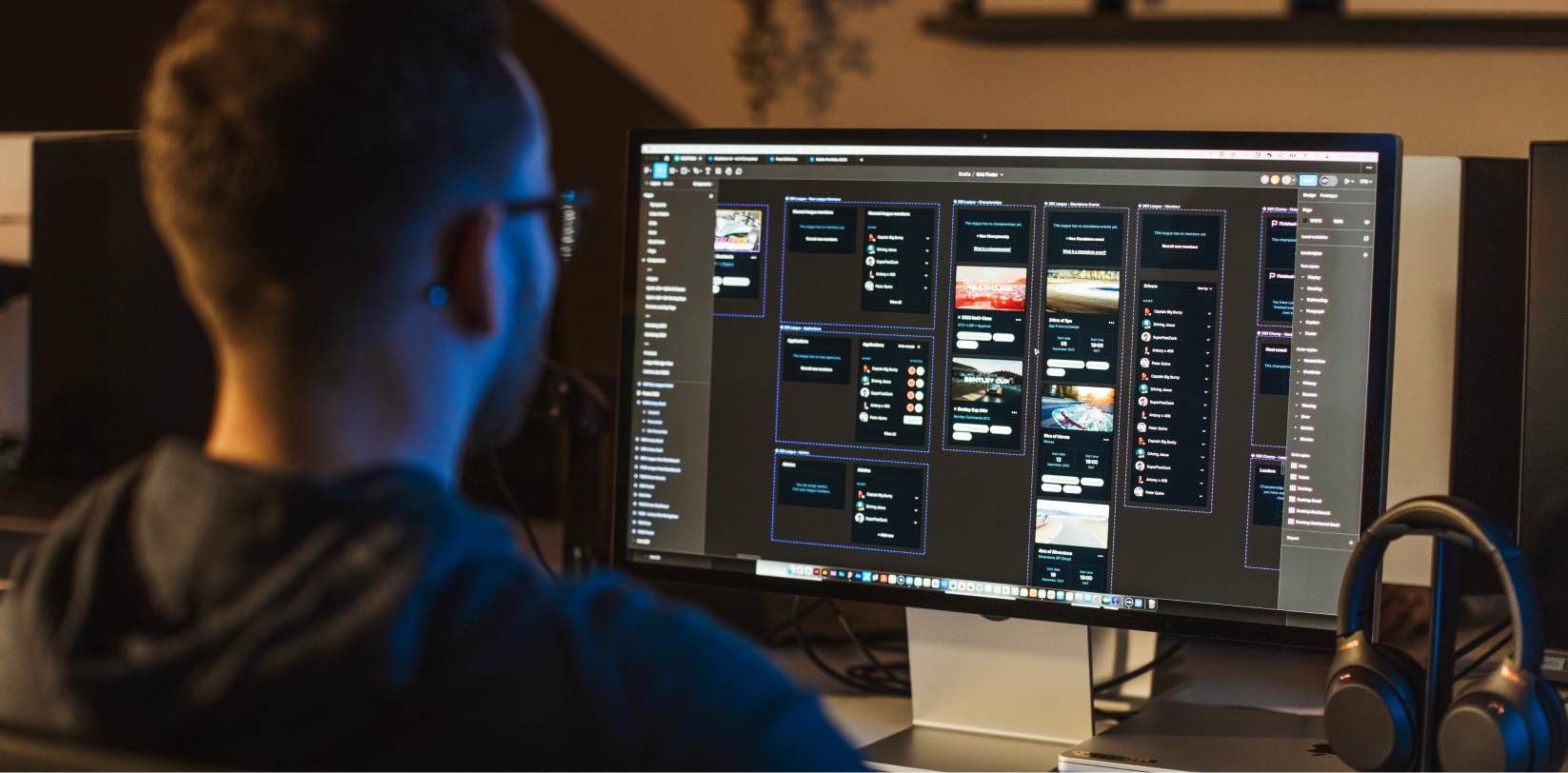In this day and age, you’ve probably heard the term ‘gamification’ fly around in conversations. Gamification has grown to be one of the most popular buzzwords of the 21st century, and more businesses are starting to prioritise gamifying different aspects of their work.
In this blog we will be going through specific topics regarding gamification and if your business should be introducing it;
- What Is Gamification?
- Why Gamification is Important & Its Benefits.
- Are there any Pitfalls of Gamification?
- How Can You Adopt Gamification To Boost User Engagement In Your Product?
- Effective Gamification with Grid Finder.
What Is Gamification?
In the simplest way possible, gamification makes work, and everyday activities, more fun. Gamification is the process of applying game-like components such as point systems, rewards, problem-solving and competition to non game activities in order to keep people motivated and participating in the product.
Games have a unique ability to captivate and sustain a user’s attention. By incorporating game-like elements, these can boost user engagement and when users are engaged they are more likely to interact with the product consistently and benefit from its feature over an extended period.
Gamification has taken off massively in the last decade. With the rapid growth of smartphones, this has increased the possibilities for gamification. Growth Engineering states that the global gamification market is projected to grow from $9.1 billion in 2020 to $30.7 billion by 2025.
Elements used in the process
When using products and services, you’re often met with gamification elements. These are usually visual signals indicating where you are in a process or completing an activity. They show the impact of the activity and present a reward.
For example, going on a morning run to close your Apple Watch activity rings or grabbing a Starbucks coffee to earn more loyalty points, both of these are highlighting your progress with milestones and rewards. It’s not always about creating something from scratch, it’s about enhancing that existing process and applying gamification elements on top.
Why Gamification is Important & Its Benefits.
Gamification is important for various reasons, and it offers several benefits in different contexts.
It can drive engagement, motivation, and positive behavioural change across various domains, ultimately leading to improved outcomes and user experiences.
Here are some key reasons why gamification is considered valuable:
It’s Effective
Gamification is highly effective with users due to its ability to tap into fundamental motivations, providing a sense of accomplishment, immediate feedback, and clear goals. The incorporation of rewards, incentives, and competitive elements triggers the brain’s reward system, reinforcing positive behaviour and fostering a desire for recognition.
The structured framework of gamification, including challenges and progression, reduces confusion and uncertainty, while narrative elements make the experience immersive and emotionally engaging. Fulfilling a user’s basic psychological needs, and social interaction promotes collaboration and competition.
Gamification instils a mindset of continual improvement and learning, creating an engaging and motivating environment across various domains. Overall, by leveraging these psychological and motivational principles, gamification effectively captures user interest, sustains engagement, and encourages desired behaviours.
Better Engagement
One of the most significant gamification benefits is increased participation. Gamification makes the user feel more in control. Gamification strategies encourage exploration, allowing people to decide how to proceed. When people have options to participate and interact, they are more likely to enjoy the entire experience.
Another reason to use gamification is that it enhances a person’s competitiveness. Humans are competitive; it’s in our nature. We like to compete with ourselves as well as with other people. Adding a dose of competitiveness, a classic game design element can boost someone’s desire to engage in a specific activity or task.
The best part about gamification is that it works for every purpose. Depending on your needs, you can apply it in marketing, education such as e-learning courses, sales or elsewhere.
Improved Retention
Gamified content helps users retain information by emphasising problem-solving. Better information retention can also improve user experience, which is yet another reason why gamification is essential. Gamification increases user engagement by making some tasks seem like a game, as a result people recall more information, which improves their motivation, participation, and overall experience.
Improved Collaboration
Since social influence is a strong motivator in a gamified environment, these techniques can make it easier for people to work together more effectively. High performers usually like sharing their knowledge with others hoping to motivate them. Gamification helps build and maintain team culture. Improving collaboration is easier said than done, but gamification can significantly help.

Are there any Pitfalls of Gamification?
Gamification can be a powerful strategy, but there’s a delicate balance between engagement and frustration. The hype around gamification can lead teams to think that it’s an easy way to make their products better. But instead of focusing on their users’ needs, some teams get caught up in the novelty of gaming, losing sight of the true purpose of their product.
Attempting to gamify a product without careful thought leads to visual noise that clutters the interface and distracts users from the jobs to be done. To avoid this mistake, concentrate on how gamification can support your users as they move through your product, rather than simply entertaining them for the sake of it.
Gamification is becoming an important part of product design. Done correctly, it can be an effective way to keep your users engaged and make accomplishing necessary tasks more enjoyable, when done poorly, gamification can be distracting and gimmicky.
How Can You Adopt Gamification To Boost User Engagement In Your Product?
To boost user engagement through gamification, begin by clearly defining objectives and understanding your audience’s preferences. Identify key behaviours to encourage and choose appropriate game mechanics such as points, badges, and leaderboards.
Provide transparent rules and instructions, create a compelling reward system, and implement a visual progress-tracking system. Introduce challenges and competitions for community-building and personalise the gamification experience based on user preferences.
Offer instant feedback and recognition for achievements, promote social interaction, and regularly iterate and optimise the strategy based on user data and feedback. A user-centred approach, aligned with audience motivations, is crucial for the success of gamification in enhancing overall product engagement.
Below are game mechanics which you can include when creating your product;
Points
You can use points as the basic rewards the users get due to their progress in your product. However, points don’t have to imply a rating; they can also show the number of check-ins or video views. Gamification points lead to either virtual or physical benefits.
The main point is that users know their points lead to something specific. Since people like to show off their progress, even online, points can be a way of achieving social status. In some cases, a point system can serve as a mechanism to unlock certain premium content available to those with higher scores.
Badges and Stickers
These are the visual representations of a user’s accomplishments. You can reward them with these when they complete specific tasks. If a user has achieved a certain rank or milestone and receives a badge for it, to maintain the status, the player is motivated to continue playing and target their next badge.
A badge is nothing more than a reward for completing a challenge or level, and or playing on a leaderboard. A reward gives the user a feeling of euphoria and motivates them to continue with the product.
Leaderboards / Scoreboards
These lists with player ranking show who performs best in a particular activity. In fact, they can be adapted to non-game apps easily. Your role is to pick the activity that you want to gamify and decide on how you will measure it, some examples are;
- If you’re running a gym, you could measure how many workouts a member does per week.
- If you are running a sales team, you could measure the number of leads that a sales rep moves to the next part of the pipeline.
- If you are a teacher, you could measure how often a pupil completes their homework on time.
By picking a behaviour and gamifying it with a leader board, you are increasing the chances that people will engage with that behaviour.
User Journey
Journeys make the user’s interaction with your app easier and understandable. You can use them for onboarding by disclosing features as the user progresses with your product.
You can use these game mechanics to adopt gamification according to your products and users needs and features. You should keep in mind that gamification is not just about design. Using gamification to improve user experience and increase user engagement.
An example of this would be Linked In. LinkedIn is using gamification mechanics within their collaborative articles feature to tap into the vast professional experience of the LinkedIn community. By contributing their perspectives and advice, professionals can share real-life, specific advice and receive recognition from their peers.

Effective Gamification with Grid Finder
Mattix Design provides UI/UX, product design and social graphics for Grid Finder. Grid Finder is more than just racing, its aim is to provide an opportunity where drivers can find and join sim racing leagues. With a library of over 2,000 leagues across various platforms, sim titles and disciplines, Grid Finder is the perfect place to satisfy your sim racing needs.
Below is an example of how Grid Finder have included gamification in the events they’ve attended and how they attracted more visitors to their platform and stand as well as including other exhibitors.
Sim Racing Expo Challenge
Grid Finder introduced a gamification concept to the ADAC Sim Racing Expo which was hosted in October 2023. This concept allowed visitors, exhibitors and the expo itself to be involved and gain valuable data and traction to their stands throughout the weekend.
Why gamify the expo?
Something that the expo had not done before was include gamification to the stands and allow visitors to become competitive and win prizes. Visitors engaged with the big brands as well as the independent brands and tested out the equipment they had on their stand with a reward at the end of it.
This benefited everyone at the expo;
Exhibitors: We did this because it increased engagements at the stands, collected valuable data on Sim Racing Expo visitors and encouraged visitors to engage with the stage shows.
Visitors: This rewarded them for trying new equipment and added an element of competition to the Sim Racing Expo.
Sim Racing Expo: It gave visitors a reason to stay longer, encouraged visitors to try out small/indie brands to watch the races.
A leaderboard was created and hosted on the Grid Finder website, this was done because we knew it would encourage competition within the visitors, it drove people to get the next badge and visit the next stand. We capitalised on the activity by creating the leaderboard as the visitors could go back and visit where they were on the board, who was competing against them and how many badges they had obtained.
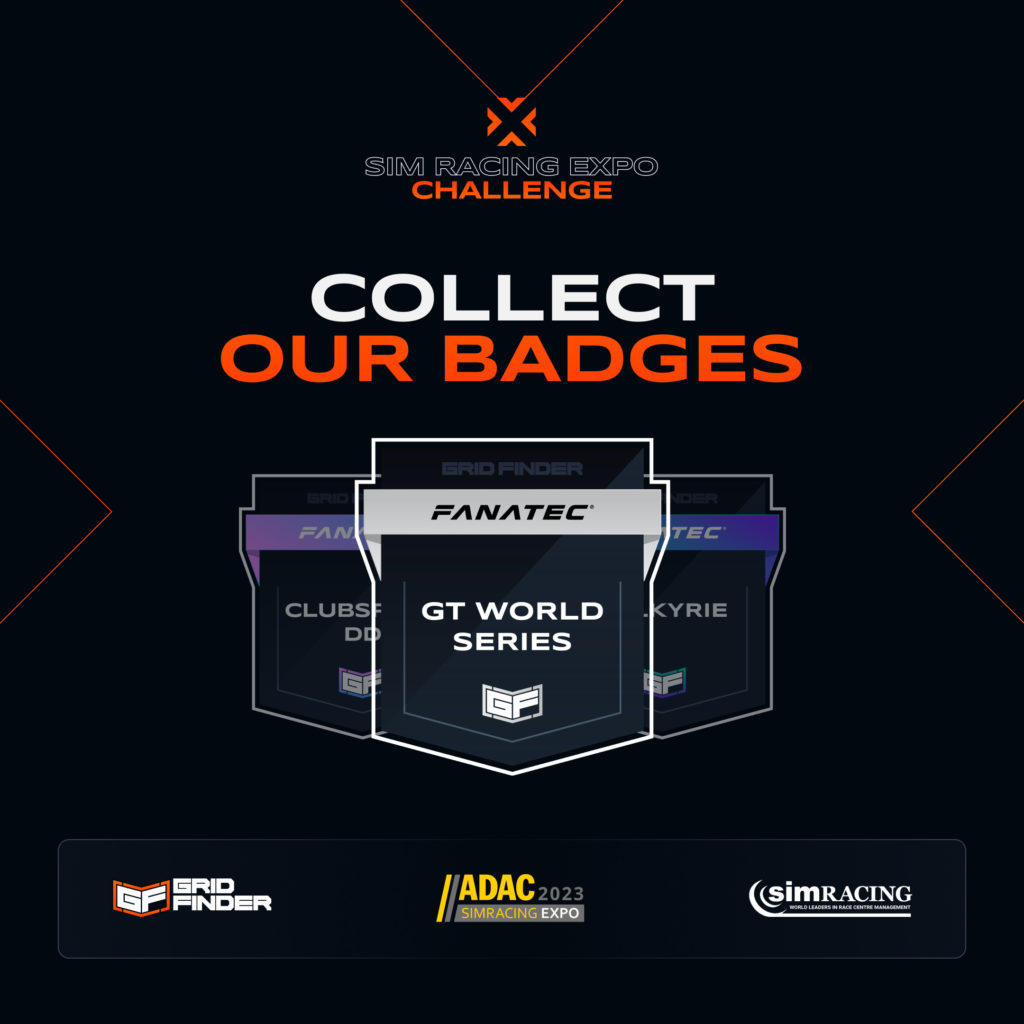
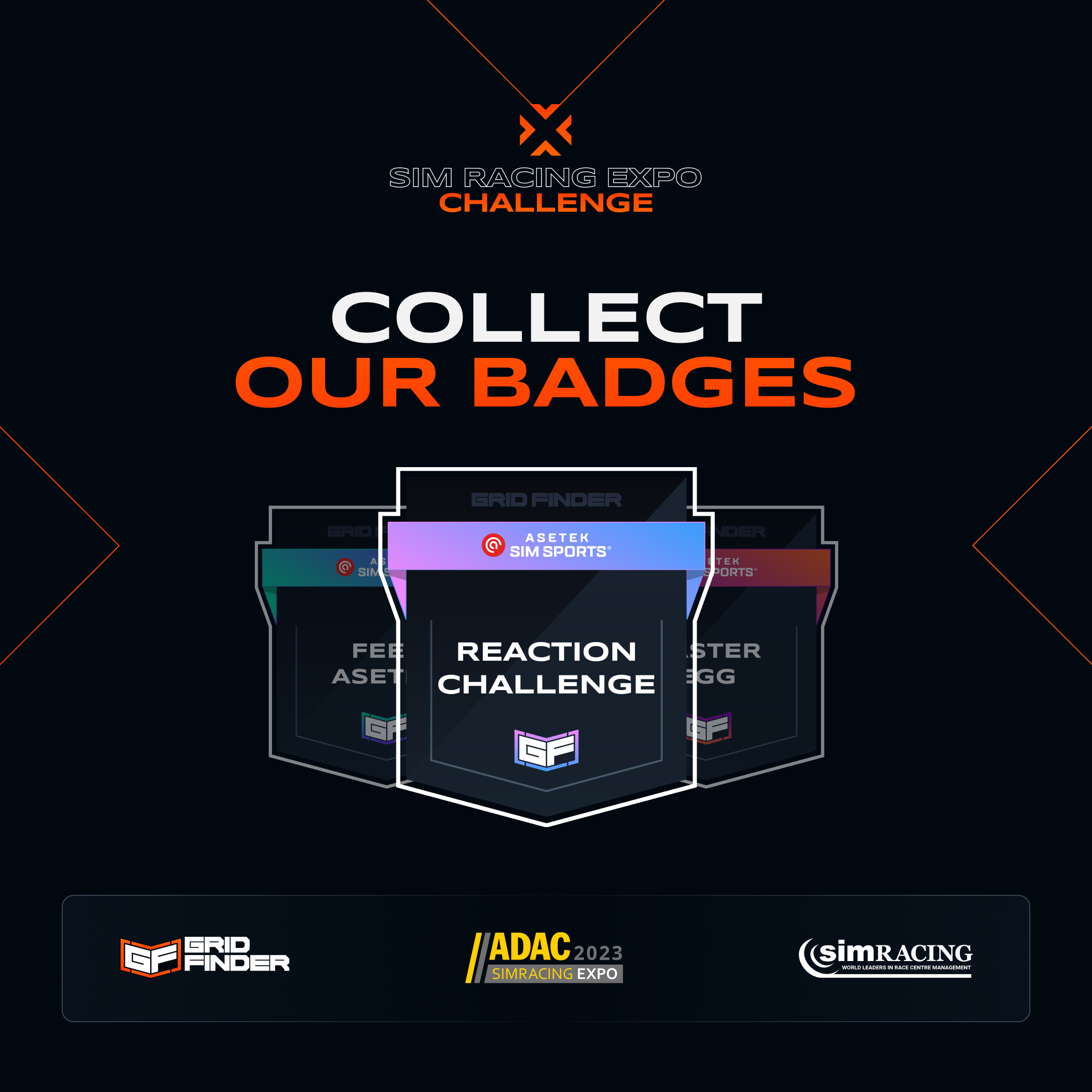
What were the prizes?
Below are a few of the brands and the prizes they were offering;
Asetek: Forte Bundle (which included pedals and sim racing wheel), La Prima Bundle (which included pedals and sim racing wheel) and Sim Racing Boots.
Fanatec: Daily Prizes and Weekend Prizes – Quick release 2 Bundle, Podium Button Module Rally and Gran Turismo DD Pro.
Original Fire Games: Free copy of Karting Superstars game.
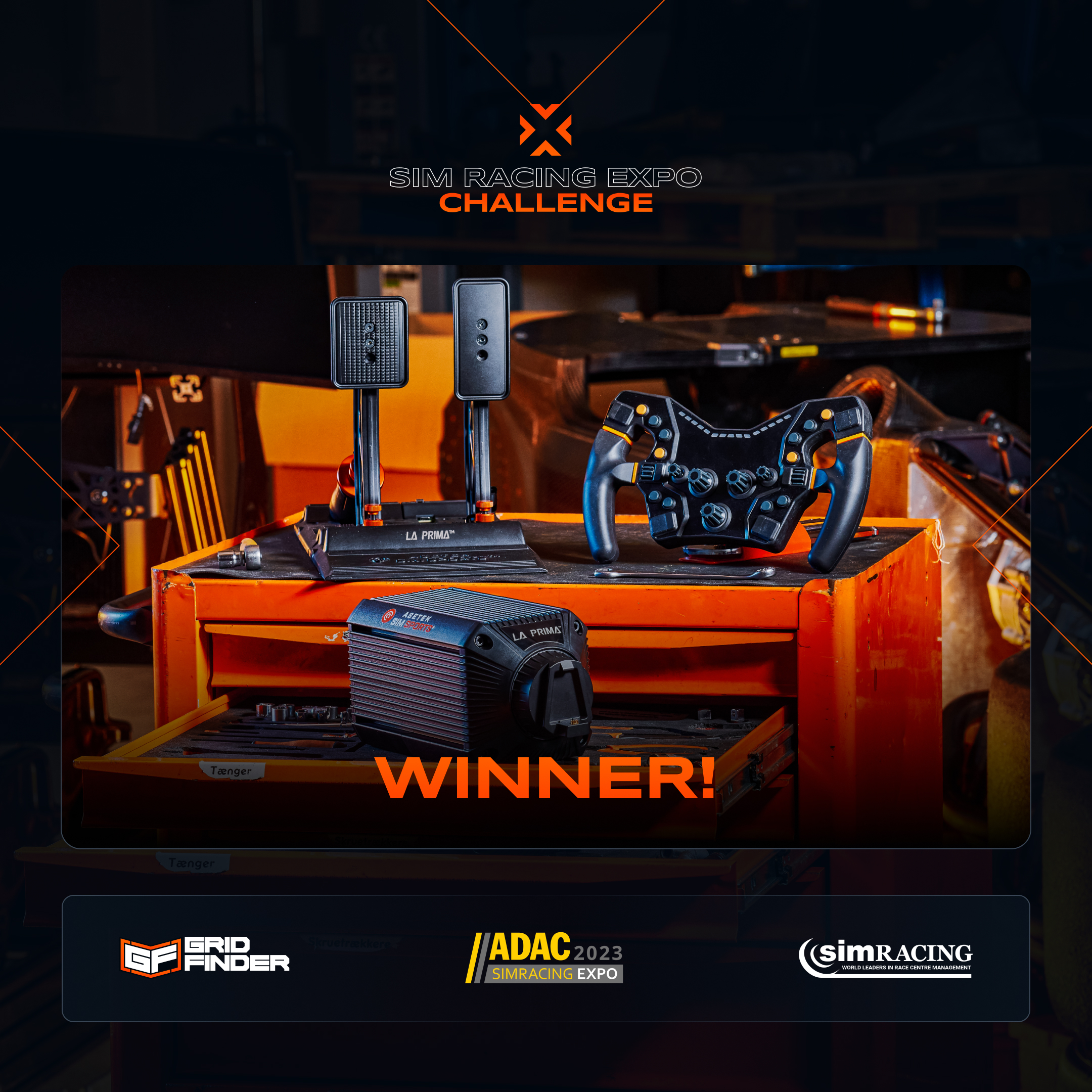
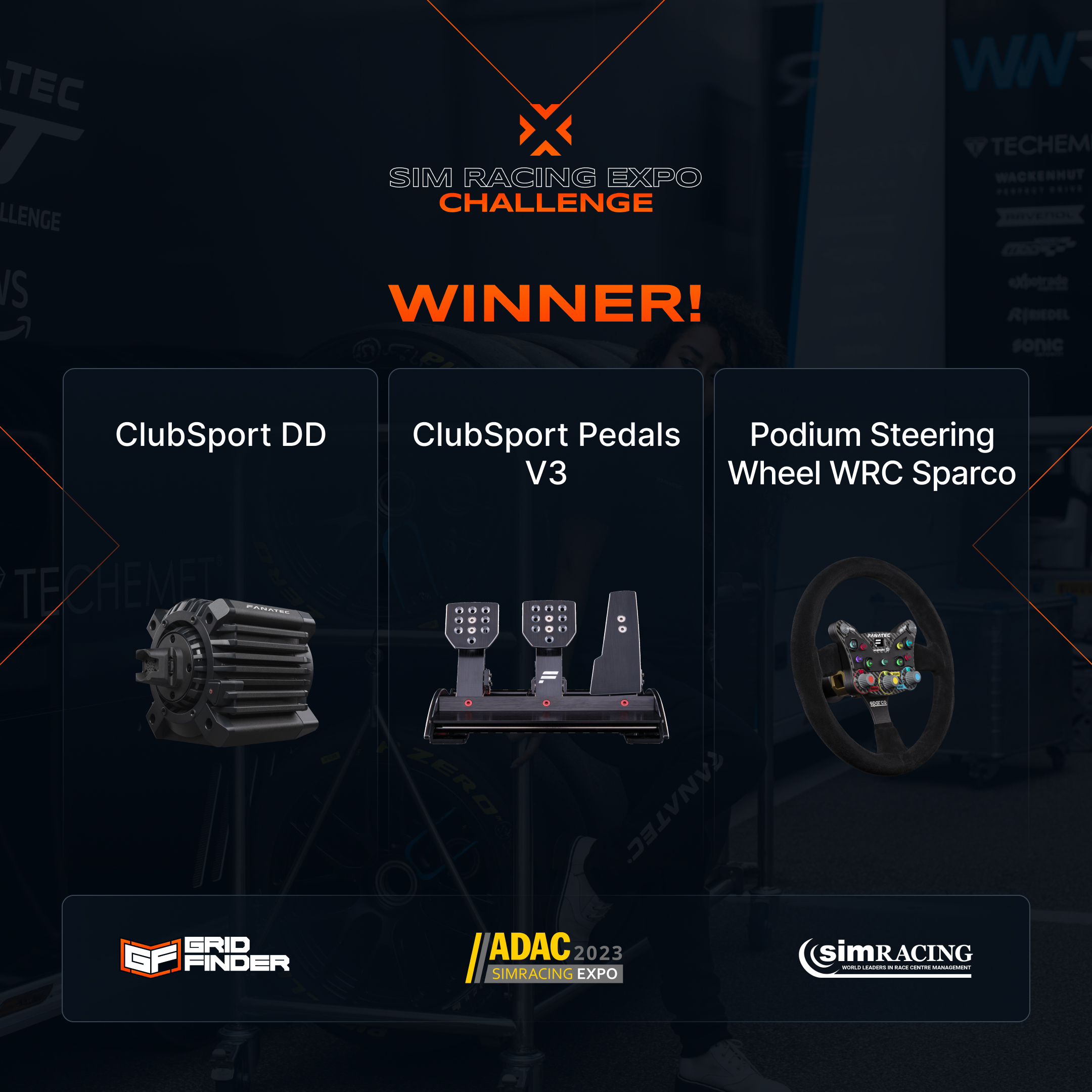
Gamification can be a powerful tool for increasing user engagement and satisfaction in your product or service. By leveraging the key elements of games and implementing specific gamification techniques, you can create a more enjoyable and rewarding experience for your users. Remember to measure the success of your efforts and iterate based on data-driven insights to maximise the impact of your gamification strategy.
Driving community engagement with gamification
Sim racing community engagement involves incorporating leaderboards, challenges and achievements to motivate competition and participation. Gamification should be designed to acknowledge valuable contributions to the community. A healthy competition between community members can bring in greater value for the entire community. So how can you do this:
Delivering value with gamification
When you have integrated your product with the community, you have a great avenue for awarding points to users who are successfully using different features of your product.
Social Sharing
You can also reward the members for sharing the community content on social media. This gives them quality content to share with their network as well as get points.
Staying connected with users
In the current age, every user is getting bombarded with advertising messages and the attention span has become very fragile. Hence, in a highly competitive arena, keep users engaged via gamification and stay on top of their minds.
Giving control
Although you are facilitating the discussions and managing the community as the owner, the community is not just about your brand, it’s about your customers and members. When you define the gamification rules, ensure that the participants are getting value and they must realise that they are in control.
Being Consistent
The gamification plan should have an ongoing engagement. This ensures that the momentum is not lost and there is always something new for the community members to achieve and get more value.
When your online community has a gamification plan that actually works, users would stay engaged by interacting in the communities and eventually spread the word about your community and product. Apart from that, a business would have an effective channel to influence consumer behaviour visa incentives to reach business goals.
Points to ponder for Community Managers
To ensure that the members are well equipped to contribute to the community, all the incentives are configured correctly, and the right engagement techniques are deployed to reach business goals. A community manager must get the fundamental knowledge of the gamification for successful implementation:
- Member Behaviour: The community manager must have knowledge of the members, their goals, the value they get from the community. When the motivation of the member is clear, your gamification plan will have a higher chance of getting aligned for success.
- Reachable Goals: If the goals are complex and look far-fetched, it can demotivate and cause frustration. The goal that a customer is required to achieve must be set in such a way, they would be able to reach different levels in a reasonable manner.
Make sure that the gamification plan is designed to reflect your brand and completely integrated with the community platform, processes as well as customer journey.
Would you like to know more about how you can make your brand stand out online? Get in touch with a member of our team today.
READY FOR US TO DELIVER?
Call us on 01482 755303
